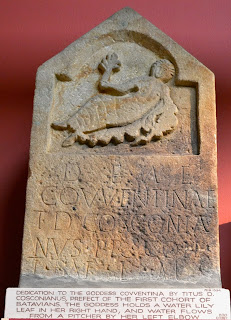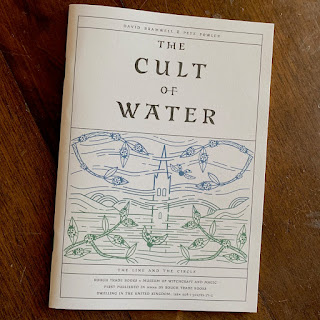This film, made by the Central Office of Information in 1973, traumatised a whole generation of British children who saw it on television. Writing in Fortean Times, Bob Fischer, who was one of them, calls them the 'haunted generation'.
'The bloody thing used to come lurching out of the ad breaks during Tiswas without any warning: one minute they'd be cheerily trying to sell you Connect 4 or this week's Look In, the next you'd be confronted by a cowled child-killer with Donald Pleasance's voice, gloomily intoning about how 'the show-offs are easy … but the unwary are easier still' and triumphantly warning, his voice laden with echo: 'I'll be BACK-ACK-ACK-ACK!'....I can remember the effect it had on me: it remains, unequivocally, the most scared I have ever been by anything. I was so scared that it continued to haunt me, years after they stopped showing it. Working on my university newspaper, I was granted an interview with Pulp. I wasted my allotted hour talking not about their music, but The Spirit of Dark and Lonely Water, which they'd recently mentioned in passing in the NME. In fairness, they seemed keen to talk about it as well. 'I know it sounds like acid bollocks,' their guitarist Russell Senior offered, 'but me and Jarvis once went down the River Don in Sheffield, throwing money in the water to appease The Spirit.''
Alexis Petridis, 'Danger! The World's Scariest Films!' The Guardian, 30 March 2012
OFFERINGS TO WATER GODDESSES
By throwing coins into the River Don, Jarvis Cocker and Russell Senior were continuing a custom which goes back to the Bronze Age. The finest Celtic metalwork has been found in our rivers, especially the Thames, Trent and Welland.
After the Roman conquest, watery offerings were restricted to shrines with sacred pools, like Bath, where the goddess Sulis Minerva was worshipped at a hot spring.
Last week I visited Carrawburgh fort on Hadrian's Wall, where there was a shrine to another water goddess, Coventina.
There was a sacred spring and pool here, Coventina's Well, excavated by
the landowner John Clayton in 1876. He found 13,487 Roman coins, though
only six can now be seen in his museum. Astonishingly, the antiquarian John Collingwood Bruce melted most of them down, and had them cast into an eagle weighing 6.5kg. A local told me that
there was an old man living nearby who, as a boy, was given handfuls of
Roman coins here. He used them as skimming stones in the lough (unconsciously returning them to the goddess).
My friend and neighbour, David Bramwell, who grew up beside the River Don in Doncaster, was another 1970s child traumatised by the Lonely Water film.
'I’ve wrestled all my life with thalassophobia – the fear of large bodies of water – and wanted to confront this fear. In the last ten years I went down a rabbit hole researching water cults, sacred springs and wells. I wanted to pay my respect to water. I also became interested in the idea of following a river back to its source. I knew if I was going to make this journey as a pilgrimage it’d have to be along the river Don where I grew up, to search for its lost water goddess and to trace its biological and metaphorical death and resurrection over the millennia. When I discovered that Sheffield adopted Vulcan – the Roman god of fire and forge – as its mascot in the 1800s, the story began to catalyse as a mythic battle of the sexes: goddess of water vs god of fire. During the industrial revolution Danu was the equivalent of a princess locked in a tower and being force-fed MacDonalds for 200 years.'
From a 2019 interview with David in Folkhorrorrevival.
 |
| Vulcan on Sheffield Town Hall |
In 2017, David made a radio programme, Danu – Dead flows the Don, for the Radio 3 series Between the Ears. It included his compositions and the sounds of the river recorded with hydrophones. There were interviews with Alan Moore, discussing hydromancy; John Heaps, a Sheffield steelworker recalling throwing cyanide into the river in the 1970s; and the Sheffield folklorist David Clarke quoting a sinister rhyme about the River Don:
'The shelving, slimy river Dun
Each year a daughter or a son.'
I recommend David Clarke's article, 'Dead Flows the Don', which is online here.
The programe also featured a Sheffield witch, Anwen, who runs a shop called Airy Fairy. She tells David to travel to the source of the Don, to make amends to the river goddess, Danu.
In 2018, David expanded the material from the radio programme to make a stage show, The Cult of Water, which he performed by candlelight for the Brighton Festival. Using film and sound recordings, he took the audience on a psychogeographical journey, back in time, up the river to its source.
You can now get the text as a booklet, illlustrated by Pete Fowler, published by Rough Trade Books and the Museum of Witchcraft.
'Can Bramwell face his demons and unravel the symbolic mysteries of our ancient ancestors? Who is the mysterious Vulcan? And will there be a pie and a pint waiting for him at the end of it all?'
DUBLIN AND ANNA LIFFEY
Watching David's show in 2018, I was struck by the parallels between David's story and Finnegans Wake. Joyce's main characters are a male city, Dublin, married to a female river, Anna Liffey. The main difference is that in Finnegans Wake, the two elements are balanced. The river and the city each have their say in the book. Anna Livia speaks at the very end, from pages 615-628, and we move from the river at the end back to the city in the opening.
 |
| Anna Liffey on the Custom House |
In one of the book's greatest sections, Haveth Childers Everywhere (532-554), HCE as Dublin describes how he 'waged love' on the river (547.07), leading her from Leixlip, and casting bridges over her to adorn her.
'I cast my tenspan joys on her, arsched overtupped, from bank of call to echobank' 547.29
There were ten bridges over the Liffey when Joyce was writing. There are now twenty-one I think.
'...and I gave until my lilienyounger turkeythighs soft goods and hardware (catalogue, passim) and fine ladderproof hosiery lines (see stockingers' raiment) and cocquette coiffs (see Agnes' hats) and pennigsworths of the best of taste of knaggy jets and silvered waterroses and geegaws of my pretty novelties and wispywaspy frocks, trancepearances of redferns and lauralworths' 548.18
Even the city's brewing of Guinness is an act of love for the river:
'I brewed for my alpine plurabelle, wigwarming wench, (speakeasy!) my granvilled brandold Dublin lindub, the free, the froh, the frothy freshener, puss, puss, pussyfoot, to split the spleen of her maw' 553.25
Joyce could write this lovesong because Dublin, unlike Sheffield, never had heavy industry. His favourite whiskey was Jameson's, which he believed tasted of the River Liffey. He told Gilbert Seldes, 'All Irish whiskeys use the water of the Liffey; all but one filter it, but John Jameson uses it mud and all. That gives it its special quality.' Joyce sent Seldes an Easter present of a bottle of Jamesons with a card inscribed, 'James Joyce presents Anna Livia's fireheaded son.' (Ellmann 592)
Imagine Haveth Childers Everywhere rewritten as the voice of industrial Sheffield/Vulcan describing his relationship with the Don!
'Choked by the coal industry at Mesborough, polluted from the heavy steelworks of Rotherham and Sheffield, the Don is diverted to soothe Vulcan's hellish heat.'
The Cult of Water
After I told David about HCE and ALP, he wrote a new Wake section for the show, which follows his arrival at the river's source.
 |
In 2019, David toured The Cult of Water, taking it to Doncaster, Sheffield, Liverpool, London and various festivals. Each performance ended with a Q&A focusing on the stories and history of the local river. So, in Brighton, he talked about our lost river, the Wellesbourne. In Liverpool, he was joined by the poet Eleanor Rees talking about the folklore surrounding the River Mersey. In London, the folklorist Chris Roberts talked about the capital's lost rivers.
He should take the show to Dublin and have a Q&A on the Liffey!
David has a new Guardian article on walking the Don, which you can read here: 'The post-industrial river, called South Yorkshire’s answer to Apocalypse Now by Jarvis Cocker in the 1970s, today boasts great trails and clean waters.'





